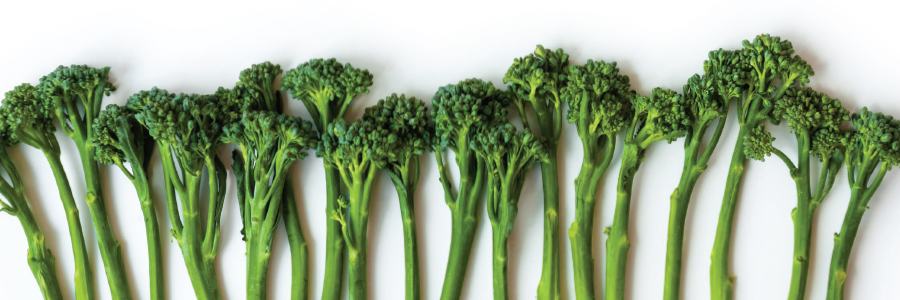


Sign-up for {N}power to get exclusive discounts, newsletters, members-only features, and more!

Are you acquainted with this tasty green veg? It has fluffy tops, tender stalks, and a name that rhymes with zucchini—they call it broccolini! Now please enjoy this helping of fun facts; perhaps you’ll share them over a broccolini-inspired repast!

A hybrid of broccoli and gai lan (Chinese kale/Chinese broccoli), it was created in Japan in the 1990s via traditional handpollination methods, not genetic engineering .1
Sweeter and milder in flavor than broccoli, some say it has notes of pepper.2 3
It’s an almost no-waste vegetable: you can eat the whole thing from stem to leaf to its tiny florets, just trim the bottom ends of the stems.4 5
Asparation was its original name (inspired by similarities to asparagus) and is still in use, but we think the more widely known broccolini is more to the point!6
This crucifer isn’t just fun and games, it gets serious when it comes to health! Broccolini belongs to the cruciferous veg family, which is unique because of compounds called glucosinolates that help defend the plants from pathogens and pests.7 The exciting news is that glucosinolates are precursors to potent, bioactive compounds that can also help your body mount a defense against toxins.8 Enter sulforaphane, a derivative of glucoraphanin, one of the main glucosinolates in broccolini. 9 Sulforaphane is synthesized when it interacts with the enzyme myrosinase, also conveniently stored in the plant, and there are plenty of reasons you want more of it in your diet:
About that enzyme myrosinase—cutting or chewing facilitates its reaction with glucoraphanin to form sulforaphane.16 However, heat impacts its function, which may jeopardize the sulforaphane content in your new favorite veg. Luckily, you can still enjoy that steamed Lemon Parmesan Broccolini (psst—we have the recipe) and your nutrients too! A recent study measured the impact of three cooking methods on sulforaphane content and found a winner—steaming. Although raw broccolini retains the highest sulforaphane levels, steaming reduced it by only 20 percent, stir-frying by 36 percent, while a whopping 88 percent evaporated from boiling.17
Organic equals more bang for your buck nutritionally. What’s the number one motivator for eating more veggies? The essential vitamins, minerals, and phytonutrients they provide! So you might call it a no-brainer to choose the produce that’s more nutritionally rich. Although nutrient content is aff ected by variables that change from farm to farm and year to year, reviews of multiple studies have found organic foods to trump conventional by several measures18 19
In case you need more persuasion, try this: According to a recent Harvard review, eating more than fi ve servings a day of fruit and veggies lowered a person’s risk of coronary heart disease and stroke by roughly 20 percent, compared to eating less than three.20 See, mom’s a genius!



Sign-up for {N}power to get exclusive discounts, newsletters, members-only features, and more!